From humble hemp plants to high-tech chemistry labs, premium CBD extract is tested every step of the way before it ends up in your hand. In this article, we’re looking at CBD under the microscope and reviewing the methods that lab technicians use to analyse your favourite hemp-themed products. We’ve explained techniques such as High-Performance Liquid Chromatography in accessible terms so you can gain the knowledge you need to make confident choices. Be sure to take advantage of our no-fuss guide to reading a COA (Certificate of Analysis) at the end of this text!

Given the immense popularity of hemp-themed wellness products, it’s likely that you’ve already heard about cannabidiol (or CBD for short). As we open this text, we’ll cover some fundamental points to refresh your memory. Botanically speaking, CBD is a cannabinoid – a unique and non-psychoactive cannabis compound made of carbon, hydrogen and oxygen atoms. It was first extracted and isolated in a laboratory setting by an American Chemist named Roger Adams. Ever since this breakthrough moment in the 1940s, scientists have scrutinised CBD with ever-increasing curiosity. Some of this interest may be due to the evolving status of cannabis as a contraband and revolutionary substance. Still, the bulk of contemporary research is assessing CBD in terms of its clinical and therapeutic potential.
Preliminary evidence suggests that – with regular consumption – some possible CBD benefits may include:
- Impacting how your body processes signals via the ECS (endocannabinoid system)
- Improved sleep
- A reduction in some symptoms of anxiety and stress
- A decrease in some signs of inflammation and inflammatory pain symptoms
- An impact on self-perceived comfort and wellbeing
With these possibilities in mind, it’s not surprising that over 11% of UK adults used CBD products in 2019 alone (according to a recent Statista report). Added to this, industry analysts anticipate that the UK CBD market may be worth over £1 billion by 2024. However, the world of CBD manufacturing is far from standardised. Despite growing efforts to regulate hemp-derived supplements with controlled substance laws and novel food policies, the fact remains that not every brand in the cannabis industry is committed to high-quality output. Let’s explore some of the current expectations for legal hemp products in the UK.
How is CBD Classified?

First things first, is CBD legal? At present, CBD is a legal substance in the UK, but some strict conditions are in place to make this possible. The British government regulates cannabis with extreme caution due to its longstanding reputation as one of the most widely consumed illegal substances in the world. It’s essential to refer to the specific national laws that apply in your country of residence before experimenting with CBD. Its legal status varies from place to place.
UK officials tolerate hemp-derived cannabinoid products that can demonstrate:
- Non-intoxicating chemistry (evidenced by a lack of THC molecules)
- Connections with licenced hemp crops
In order to be legal in Britain (and throughout most of the EU), CBD products must contain no more than 0.2% THC. As we’ll touch upon shortly, THC is a substance that may potentially produce intoxicating effects when consumed in excess.
CBD as a Food Product
At this point, it’s also worth mentioning that CBD is often classified as a food supplement. As a result, edible products ranging from CBD oil to hemp-infused chocolates must comply with national food policies. This process involves the Novel Foods Act and general Food Safety Laws enforced by the Food Standards Agency (FSA) in the UK. Here, one of the primary goals is to ensure that all food products sold in Britain are appropriate for consumption. Food and beverage manufacturers must ensure that their products aren’t contaminated with toxins, mould, or other hazardous content.
As you can imagine, lab tests help prove the quality and authenticity of CBD products, while also screening for any possible contaminants. Whether you’re interested in CBD gummies or bath bombs, you have a right to know precisely what you are purchasing.
How is CBD Made?
Unless you opt for synthetic sources, CBD is made naturally by hemp plants in curated wild crops or controlled greenhouse settings. Like most plants, hemp relies on suitable growing conditions that offer sufficient moisture, humidity, warmth, nutrients, light, and soil composition. These factors influence the crop’s yield and the chemical properties of the plants that are harvested. While hemp has a reputation as a relatively “hardy” and resilient crop, plants grown for the CBD industry receive devoted care and attention as they mature. Producers must ensure that Good Manufacturing Processes (GMPs) are maintained every step of the way – especially during the extraction and purification stages.
In most cases, CBD is extracted via supercritical CO2 extraction. In basic terms, this involves using CO2, pressure, and temperature fluctuations to transport hemp molecules between liquid and gaseous states. The emerging botanical extract is then collected and developed. Since hemp is naturally high in CBD, it has desirable chemistry. Cannabidiol extract is typically available in one of three forms:
- Full-Spectrum CBD (containing a full range of natural hemp compounds)
- Broad-Spectrum CBD (a THC-free version of Full-Spectrum)
- CBD Isolate (the most ‘purified’ version of CBD with no other compounds present)
These extracts are the cornerstones of all CBD-themed products (apart from alcohol/glycerin based tinctures). For example, developers create best-selling supplements such as ‘CBD oil’ by mixing their chosen hemp extract with a carrier fluid (such as hemp seed oil or MCT oil). Manufacturers also use these infusions as a means to blend CBD into other products – ranging from foods and beverages to skincare.
The Chemistry of CBD

As we appreciate the chemistry of CBD, we should remember that it’s rooted in the cannabis family. CBD is a botanical compound that manufacturers extract from hemp plants using high-performance techniques, and these processes often involve mediating any other plant substances which may be present. To obtain CBD isolate (also known as ‘pure CBD’), developers go to great lengths by distilling and purifying the extract – ensuring that it is free from unwanted compounds. Rather than being an isolated substance in nature, CBD exists in the ‘company’ of many other phytochemicals. Cannabinoids (such as THC), terpenes (aromatic molecules), and flavonoids (potential antioxidants) tend to be present alongside CBD at a chemical level.
Before we learn more about CBD testing, let’s review some of the active substances that may be detectable in CBD samples.
Cannabinoids
Cannabinoids are unique compounds that most scientists attribute to cannabis plants. However, as is often the case in the botanical world, some cannabinoids can also be found in other plant species. For example, researchers suggest that coneflowers and cacao may contain compounds that mimic the properties of cannabinoids. While CBD is often singled out as a substance with ‘celebrity status’, it’s helpful to remember that full or broad-spectrum CBD contains additional hemp compounds.
Rather than attempting to list over a hundred of these fascinating substances, we’ll be focussing on the cannabinoids that CBD testers most commonly detect (at least in trace quantities).
THC

THC was first coined with the 1960s discovery of ‘delta-9-tetrahydrocannabinol’. It’s a well-known psychoactive plant compound that is notably present in the “marijuana” subspecies of cannabis. Consuming large quantities of THC can trigger euphoria and create a potentially dangerous “high” in some circumstances. A study by Jeremy R Johnson and others suggests that THC molecules may synergise with CBD to impact some pain symptoms. Other studies indicate that controlled exposure to limited amounts of THC might potentially influence signs of anxiety, inflammation, and insomnia.
CBC
Cannabichromene (or CBC for short) is a cannabinoid that scientists are still ‘unpacking’, particularly regarding how it may interact with our bodies. According to research published in 2019, CBC molecules can be fairly abundant in hemp plants, and consuming them might influence some of our perceptions of pain and inflammation symptoms. Other preliminary evidence suggests that CBC may possibly affect signs of stress and depression. Like most of the cannabinoids found in hemp, it is not a psychoactive molecule.
CBG
CBG is an acronym for cannabigerol – another intriguing substance found in hemp plants. The acidic version of CBG (aka CBGa) is present in hemp flowers, and you can think of it as the “grandfather” of cannabinoids. It serves as an essential ‘building block’ to support THC, CBD, and CBC synthesis. In its non-acidic form, CBG is a fully fledged cannabinoid in its own right. Researcher Rahul Nachani and others suggest that CBG might impact neural cells and affect some symptoms of muscle tension and inflammation.
CBN
Cannabinol (CBN) is a minor cannabinoid that is most commonly found in mature hemp plants. It’s formed when THC molecules degrade in response to changing oxygen levels and temperatures. While the idea of consuming “old THC” may not sound appealing, scientists now suggest that CBN may offer some unique properties. Recent studies indicate that it might potentially impact some symptoms of pain and discomfort. Now that we’ve covered the cannabinoids that scientists often screen for in CBD tests, let’s review some common terpenes.
Terpenes

What are terpenes? Put simply, they are the fragrant, oil-based substances responsible for creating the signature smells we associate with plants such as lavender, basil, and (not surprisingly) hemp. If you’ve ever used products such as hemp seed oil or Full-Spectrum CBD, you may have noticed an ‘earthy’ or ‘woody’ aroma. Terpenes make this possible, but they’re not just here to tantalise our senses. Current research suggests that these fragrant compounds might just offer some unique wellbeing benefits of their own.
Let’s look at some of the most popular terpenes that are accounted for in CBD lab screenings:
Bisabolol (Levomenol)
Most commonly found in chamomile flowers, alpha-bisabolol has a gentle and sweet scent and exists as a colourless oil. According to researchers Russell and Jacob, it may offer some dermatological benefits – possibly impacting your skin texture and signs of inflammation. As you may know, chamomile is nothing new. People have utilised it for centuries – especially in tea.
Camphene
Camphene is described as a ‘monoterpene’ because it contains only carbon and hydrogen atoms. This substance is a bicyclic compound (arranged in two conjoined rings) present in rosemary, ginger, and hemp plants. A rodent study from 2011 suggested that exposure to small amounts of camphene may potentially influence cholesterol and normal heart functioning. There is also evidence to suggest that it might be harmful when consumed in excessive quantities.
Carene
Carene is another example of a bicyclic monoterpene found in hemp plants. It has a citrusy flavour and may impact some signs of inflammation. According to some studies, it might possibly interact with some of the natural bone-maintenance processes that occur within your body.
Beta-Caryophyllene (BCP)
Most notably found in cloves and black pepper, BCP is responsible for the ‘spiciness’ or flavoursome ‘kick’ that characterises many edible plant sources. Technically, it is a sesquiterpene, and has a more complex structure than most other aromatic hemp compounds. Numerous animal studies suggest that BCP might possibly affect natural cell processes and impact some symptoms of inflammation.
Cymene
Cymene (formally known as para-cymene) is most commonly associated with essential oils obtained from herbs and spices such as cumin and thyme. In terms of chemical structure, it is a hydrocarbon derivative that is bound to a monoterpene. According to a recent Canadian analysis, cymene might possibly demonstrate some antioxidant and antimicrobial properties.
Alpha-Humulene
In nature, alpha-humulene helps to protect hemp plants from predators, pests, and fungus. Like BCP, this compound is classified as a sesquiterpene with a fairly complex structure. A study published in June 2020 suggested that alpha-humulene might possibly offer some antibacterial properties.
Isopulegol
With its minty fragrance, isopulegol is the chemical cousin of menthol – a substance you probably encountered the last time you brushed your teeth or chewed gum. As summarised by a recent research paper, years of animal studies suggest that isopulegol may potentially impact some symptoms of muscle tension, digestive discomfort and maybe even anxiety.
Other Relevant Terpenes
Given the sheer quantity of terpenes present in hemp plants, we can’t do this category justice in a few short paragraphs. For a more in-depth report, you’ll love our informative Academy piece: Terpenes: Not Just a Pretty Fragrance. Otherwise, we’ve listed several other significant hemp terpenes below:
- Limonene (commonly found in citrus fruit peels)
- Linalool (may potentially influence sleep and self-perceived relaxation levels)
- Myrcene (another terpene with an iconic “earthy” fragrance)
- Ocimene (a terpene with a sweet, grassy aroma)
- Alpha-Pinene (found predominantly in coniferous trees)
- Terpinene (also found in cardamom and marjoram oils)
- Terpinolene (known for its possible antioxidant effects)
By this point, it’s apparent that hemp derivatives such as CBD can potentially contain an impressive abundance of natural substances. Astoundingly, we’ve only scraped the tip of the iceberg. With all these variables (along with other factors we’ll discuss later), CBD products must be reviewed by specialists from accredited laboratories. By choosing brands that provide you with every assurance in their power, you can focus on what’s really important: your comfort and wellbeing.
Why Should We Put CBD to the Test?

As you may have heard, the modern cannabis market is one of the most rapidly-growing industries in the world. As the field becomes more profitable, instances of products being carelessly manufactured and falsely advertised may also be on the rise. Did you know that recent test results from the Centre For Medicinal Cannabis (CMC) suggest that 45% of generic high-street CBD products may possibly contain chemical flaws? While it might be easy to get enticed by attractive packaging or slick marketing schemes, it’s crucial to establish your chosen CBD product’s chemical profile. Third-party lab tests are rigorous and unbiased procedures that identify and document the substances present in your product – substantiated by an official Certificate of Analysis (or COA). We’ll discuss more on this topic later, but first, let’s review some of the benefits of reviewing CBD lab reports.
While tests are always calculated events, they allow brands to evidence their cooperation with more comprehensive frameworks and dedication to excellence. Accordingly, CBD brands that organise third-party lab reports leave no room for guesswork where their product chemistries are concerned. Better yet, brands that proudly display their certificates demonstrate confidence and transparency. As you assess different CBD companies according to your needs and preferences, you should expect products to be verified by experts with uncompromising standards. Here at Alphagreen, our curated marketplace makes it easy to source CBD from the best brands.
In today’s marketplace, it’s easy to feel ‘cheated’. It’s no secret that the internet hosts a new generation of scammers and disreputable businesses. Unfortunately, not all so-called CBD products are as they would appear. Some may even contain 0% CBD extract! As a customer, the last thing you want is to lose money or find out that the products you ordered are of inferior quality. Worse still, poorly made food supplements may even put your health at risk.
Lab-verified test results provide an objective overview that rests on an accredited science facility’s expertise and solid reputation. While your personal experiences with using CBD may vary, it’s always good to know that your chosen product is on record as an accurately represented substance that conforms with relevant GMPs (Good Manufacturing Processes).
While CBD is illegal and restricted in many international territories, you can currently travel with regulation-compliant CBD in the UK, and throughout several regions in the USA and the European Union. Understandably, transit authorities often leave no stones unturned while checking for cannabis derivatives – even in countries where hemp is legal. If you are lawfully travelling with CBD oil and your product comes with supporting documentation, you can show these lab reports to any transport officials who may question its contents.
The Benefits of Third-Party Lab Testing
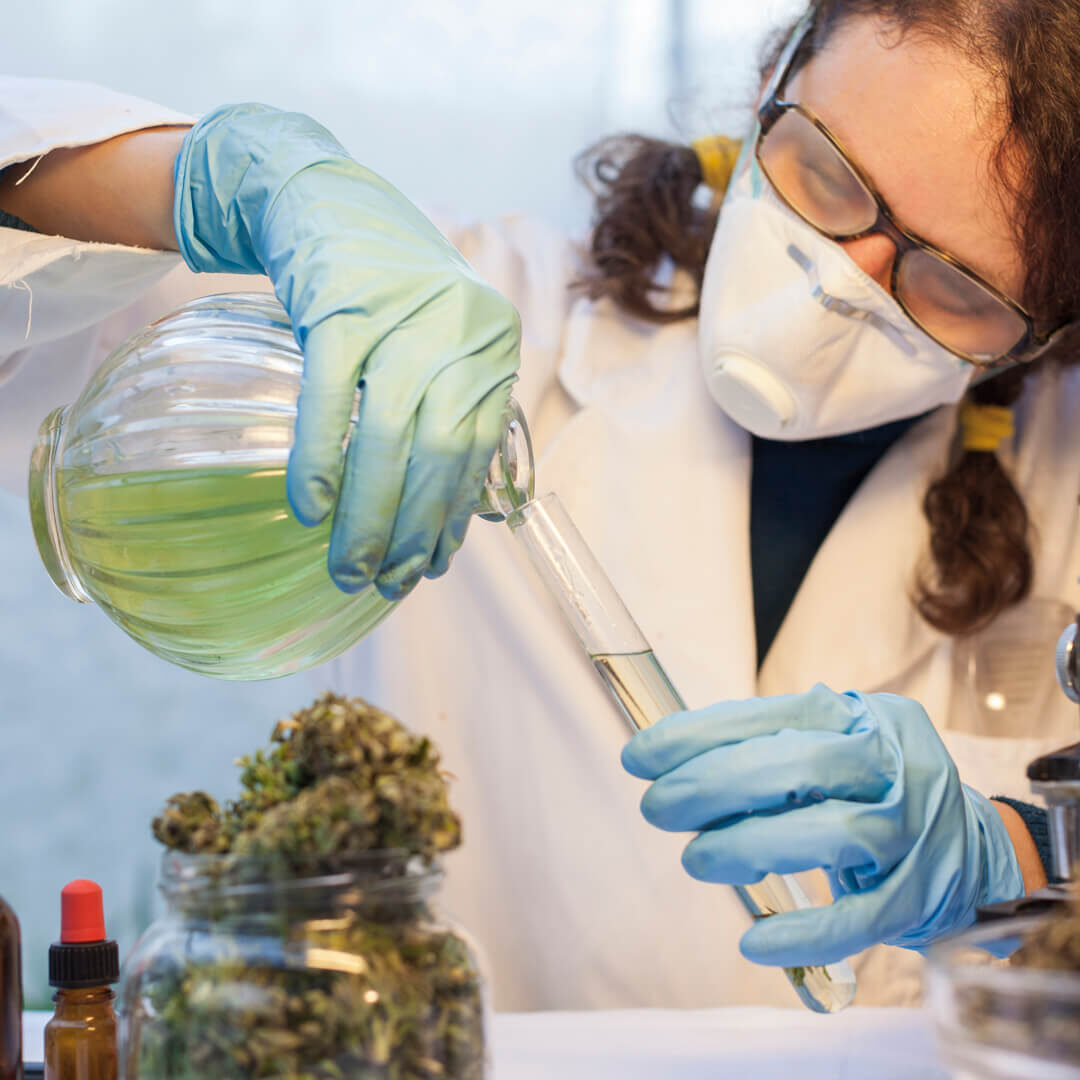
What is third-party lab testing? As the name suggests, third-party labs are private facilities run by ‘outsourced’ parties that are not associated with CBD brands. While most companies conduct in-house CBD tests throughout their manufacturing processes, these reports aren’t guaranteed to be accurate. Furthermore, a conflict of interest may arise when a CBD company uses its employees to generate results. Since unaffiliated analysts conduct third-party lab tests, they are more credible for numerous reasons:
Impartiality
CBD brands do not control third-party labs, so the scientists are not under pressure to deliver anything other than the truth: an accurate representation of the samples they’ve received. Consequently, this allows them to produce unbiased and objective reports. While marketing campaigns are often crafted to present companies in their most favourable light, third-party lab tests are solely interested in the evidence.
Scope
Third-party labs often represent expensive, elaborate and full-scale testing facilities that would otherwise be challenging to access. As analytical ‘power houses’, they are staffed by expert chemists and technicians who cross-examine samples using a wide array of research methods. Thus, they can go to great lengths to ascertain the exact contents of CBD products.
Reputation
Each time third-party labs publish CBD test results, they place their facility’s reputation on the line. In many cases, scientific reports include an official stamp of approval, registered test numbers, and a lab representative’s signature. Choosing a premium CBD brand with third-party lab results can give you an added sense of security – knowing that the manufacturers and the analysts are willing to hold themselves accountable. All in all, third-party lab tests are fundamental as a means of quality control – to ensure that each batch of CBD extract is standardised and consistent with regulations. Scientists utilise their industry expertise, meticulous techniques, and state-of-the-art equipment to assess the profile of CBD. Let’s consider some of the red flags that they are looking for:
What Do Third-Party Labs Assess?
Most premium CBD products are labelled with a percentage to indicate the concentration of molecules present. For example, you might have seen products such as ‘10% CBD oil’. By performing a detailed analysis of cannabinoids and the extent to which they are present, third-party labs can declare the chemical potency (or ‘strength’) of these compounds. This practice ensures that THC levels are within legal limits. Labs also use terpene profiling techniques to verify the aromatic molecules in a sample – especially as some people may be allergic to substances like limonene. Aside from recording the specific plant chemicals accounted for in any given CBD sample, scientists also check for contaminants ranging from microorganisms to solvents.
Organic Toxins
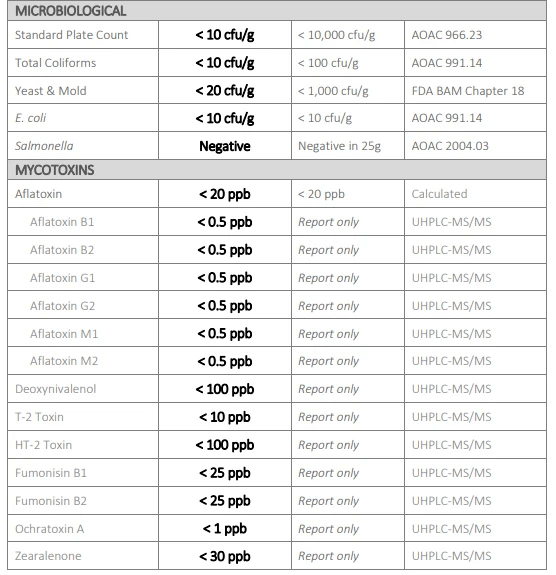
According to the World Health Organisation (WHO), some fungi strains generate dangerous toxins (also known as mycotoxins), growing in moist and warm conditions. Exposure to these toxins may be harmful to humans and animals – mainly due to the carcinogenic and possibly deadly properties they may possess. Most products for human consumption must undergo mycotoxin tests, and hemp-derived CBD is no exception. For your information, some of the mycotoxins that CBD-testers screen for include:
- Aflatoxins
- Deoxynivalenol
- T-2 Toxin
- HT-2 Toxin
- Fumonisin
- Ochratoxin
Pesticides
While many of the natural chemicals found in hemp may help to repel insects, some farmers attempt to increase their yield by using pesticides. As you may already know, pesticides are substances intended to inhibit or kill pests that could otherwise damage plants. Researchers suggest that exposure to some of these mutagenic chemicals can potentially jeopardise our wellbeing. Therefore, labs must screen for traces of pesticides.
Why do CBD products have to be tested for heavy metals such as lead, chromium, and zinc? Soil contamination is a severe environmental issue perpetuated by chemical waste disposal, mining, and industrial manufacturing. According to Kanwal Rahman and others, exposure to toxic heavy metals may potentially result in poisoning symptoms and possibly even disease. Consequently, all products must be tested for heavy metals.
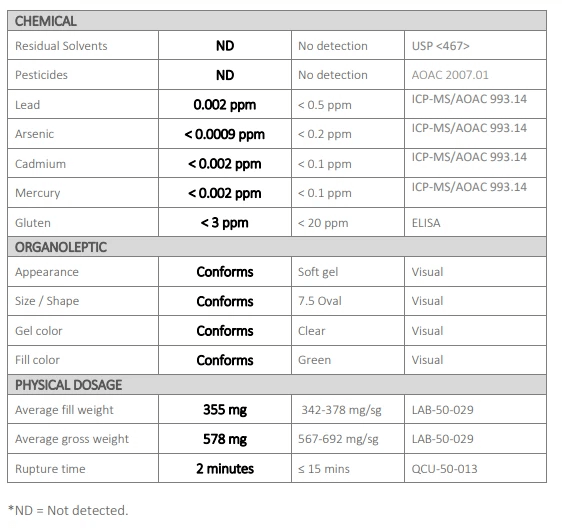
Often, developers use chemical solvents to assist with the extraction, distillation, and purification of CBD. While these substances can perform useful functions within the manufacturing process, all lingering traces of solvents need to be removed from the final product. In some cases, exposure to chemicals such as benzene and toluene may put human health at risk. Since people often seek CBD for its potential wellbeing properties, labs need to make sure that it doesn’t contain any harmful contaminants.
Standard Methods of Testing CBD
As we’ve established, CBD manufacturers must be able to confirm the safety and legality of their products with lab-verified test results. However, the specific methods used to analyse CBD are not set in stone. Often, third-party lab technicians adopt a combined approach – since there is rarely a one-size-fits-all test that provides all the information needed to reach a conclusion. To begin this process, labs require a sample of the substance they will be analysing.
Obtaining a CBD Sample
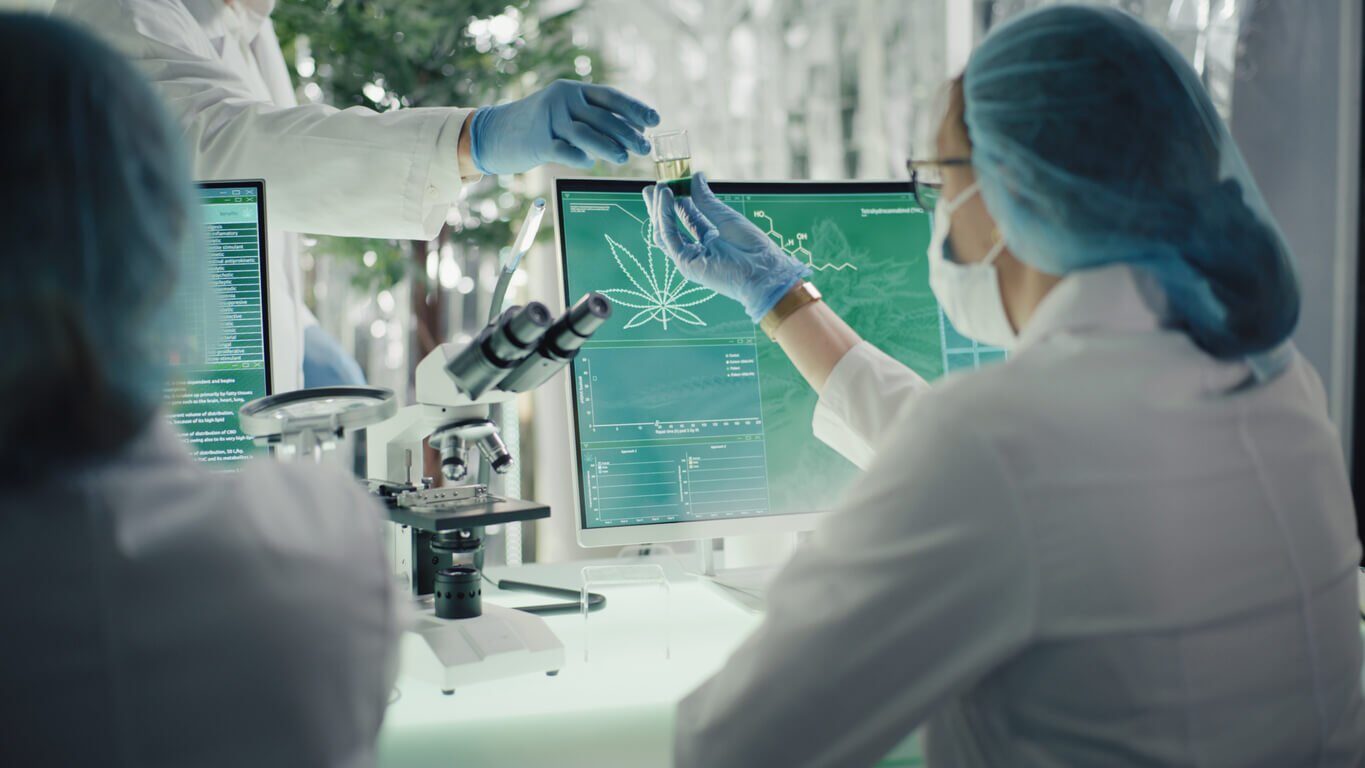
Product samples ought to provide an accurate representation of an entire batch so that the findings can apply to the bigger picture. In line with requirements, representatives from the third-party lab are responsible for collecting CBD samples. While hemp distributors should be present, they are not allowed to interfere with this process. These rules are maintained to prevent people from ‘rigging’ their test results. Once lab technicians have access to a suitable sample, they can analyse it using a wide variety of techniques.
Identifying Compounds Using Chromatography
In simple terms, chromatography is a standard technique that chemists use to separate compounds in a mixture. This approach allows individual substances to be identified – including cannabinoids such as CBD, THC, and CBC. One of the preliminary forms of chromatography that scientists use to assess CBD extract is called ‘High-Performance Liquid Chromatography’. Let’s take a look at this method in closer detail:
High-Performance Liquid Chromatography (HPLC)
At its most basic level, HPLC enables scientists to separate compounds in a mixture based on how they respond to liquid (or, more specifically, their ‘polarity’). To perform this test, technicians add a sample of CBD extract to a ‘stationary phase’ – a compact column typically made of silica. Next, the ‘mobile phase’ takes place. This section involves pumping a liquid (water-based solvent) through the column and gradually ‘flushing out’ compounds from the CBD sample. It’s important to note that this is a timed process.
Each compound is assigned an official ‘retention time’, and the periods required for different sample components to pass through the column help scientists identify the substances present. Since CBD compounds have a specific structure and profile, they have a unique retention time.
Analysing Molecular Structure With Spectroscopy
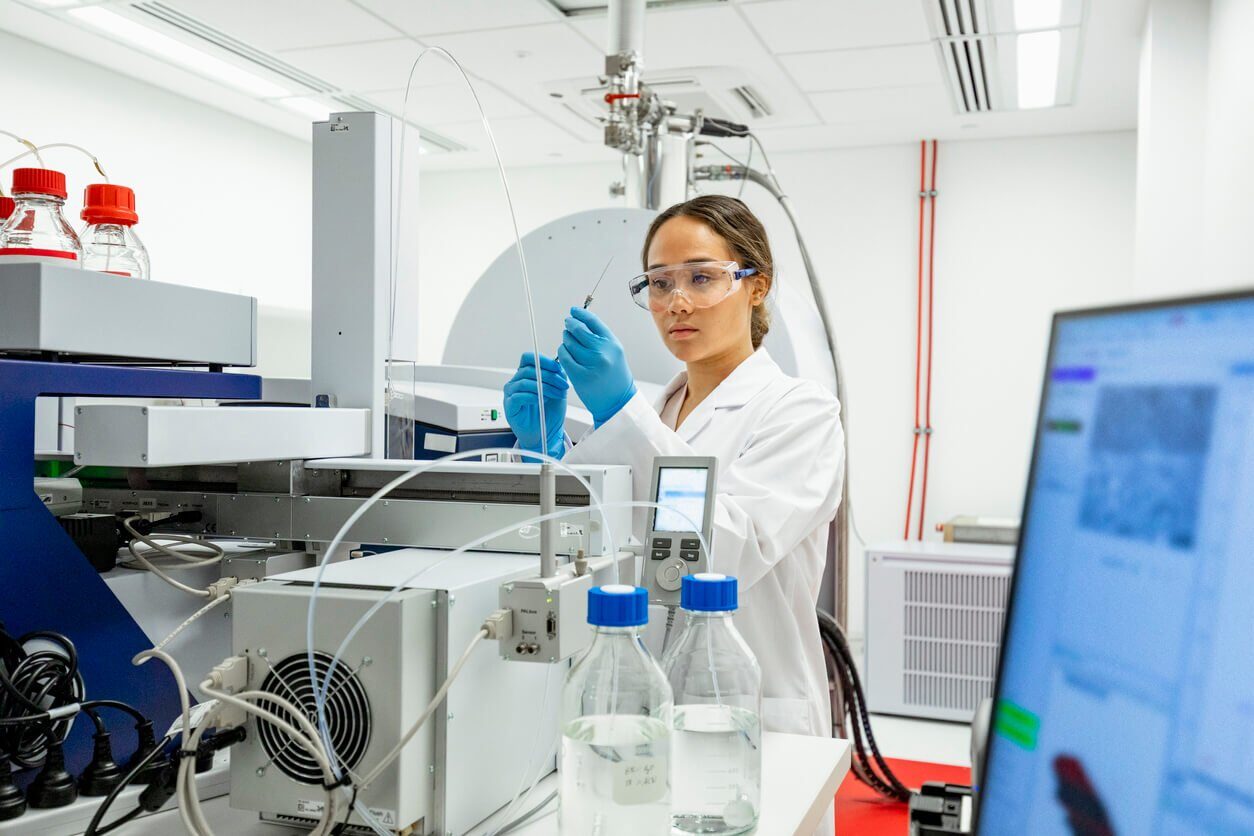
Put simply; spectroscopy examines how light waves and other forms of radiation are absorbed and released by substances/matter. It also observes how particles interact and collide. As a result, scientists in all research fields often utilise spectroscopic techniques to identify atoms and molecules structurally. Since hemp contains a diverse selection of substances, lab technicians can confirm the molecules that are present based on their structure.
Mass Spectrometry (Mass Spec)
This process involves ionising compounds and placing them in a magnetic or electric field. In essence, the forces in the field divert or ‘push’ the particles according to their mass-to-charge ratio. The preferred method for testing CBD involves electron ionisation – using high-speed electrons to fragment molecules. This method takes into account the unique fragmentation pattern and characteristic ion peak attributed to molecules. Depending on the extent that the particles divert along a spectrum, lab technicians can identify atoms and compounds according to their mass. Mass Spec is often used in conjunction with HPLC to confirm the structures of individual substances extracted from a sample.
Nuclear Magnetic Resonance Spectroscopy (NMR)
Just as an MRI scan is used to ‘take pictures’ of the structures within a patient’s body, NMR applies similar principles to assess the content purity and molecular structure of a sample. This spectrum technique uses a strong magnetic field that aligns the spins of atomic nuclei. In these conditions, the nuclei resonate – producing peaks that can be recorded. Each peak is characteristic of a particular atom, and as the process continues, the apparatus can map out the composition of a molecule. In the end, a computer will produce a read-out of these peaks, which collectively represent the structures of the compounds present.
Additional Quality Control Tests
Assessing Fungal Risks Using Thermogravimetric Analysis (TGA)
TGA uses temperature and time to record changes in sample mass – particularly those associated with moisture loss. If cannabis plants are stored in improper conditions before CBD extraction (for example, if the plant material is not dried correctly), there can be a risk of infestation. Since mould and fungal cultures are living organisms, they rely on adequate food sources, oxygen, and water levels to survive. TGA uses a mass-loss-on-drying method to confirm the amount of moisture present in a sample – which helps lab technicians to determine whether the CBD is at risk of being contaminated by microorganisms.
Detecting Microbes With Polymerase Chain Reaction (PCR)
Casually referred to as “molecular photocopying”, PCR is a method that allows scientists to ‘copy’ DNA segments to achieve an exact sample that is sizable enough to analyse. Scientists can use this technique to study and detect microbes such as bacteria. It’s a cyclical process that involves denaturing DNA with heat to break it into single-strand molecules and then adding an enzyme that can generate ‘copies’ of these molecules. PCR produces an ‘amplified’ DNA sample that scientists can test using several other clinical techniques.
Detecting Heavy Metals Via ICP-MS
According to Wilschefski and Baxter, Inductively Coupled Plasma Mass Spectrometry (or ICP-MS) is a technique that scientists use to detect low and ultra-low concentrations of elements (such as heavy metals) in bio-organic fluids. In basic terms, ICP-MS uses a nebuliser to convert a CBD sample into a very fine mist that enters an ICP torch. The torch generates plasma, which ionises any elements that may be present in the sample. Later on in this process, tab technicians identify the separated elements according to their mass-to-charge ratio using Mass Spec techniques.
Detecting Residual Solvents With Gas Chromatography (GC)
Not surprisingly, gas chromatography (GC) is similar to the HPLC technique we discussed a moment ago. The critical difference with GC is that its mobile phase requires a carrier gas such as hydrogen or nitrogen rather than liquid. Following similar procedures to those detailed above, technicians measure the vaporised sample’s retention time as the gas effectively ‘pushes’ it along. Most commonly, scientists testing CBD use this technique to detect any possible solvent residue.
To Sum It All Up
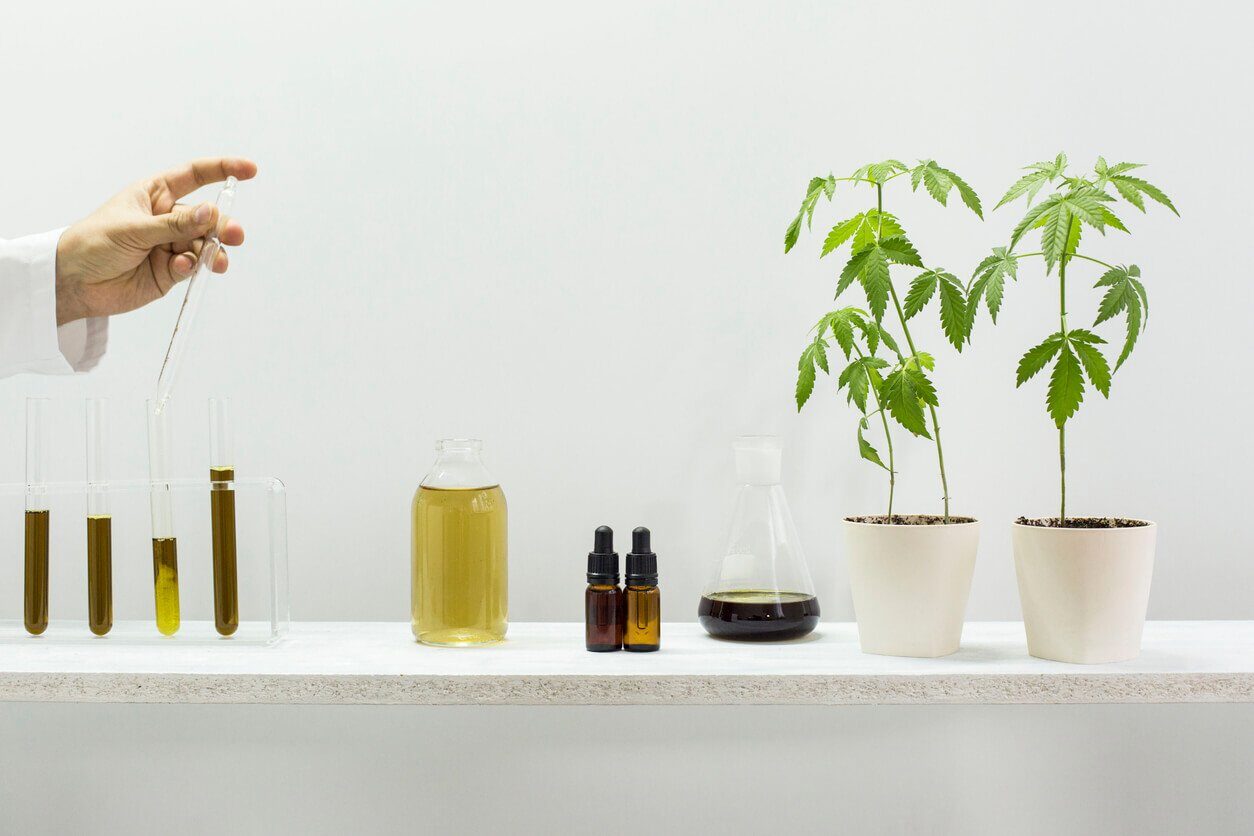
While CBD is a natural, hemp-derived substance, premium CBD brands take great care to develop expertly made products that reflect Good Manufacturing Practices. They often enlist the help of third-party labs – submitting CBD samples for advanced and unbiased tests. To obtain the evidence required to support any given CBD product’s chemistry, scientists utilise a diverse range of techniques. The conclusions they reach are summarised in a document called a Certificate of Analysis (COA). Throughout the rest of this text, we’ll explain more about what this document is and how it can empower your decision-making.
What is a Certificate of Analysis (COA)?
A COA is a certified report issued by an accredited laboratory. You can think of it as a certificate of authenticity. If you want to know the total composition of a CBD product, a COA is an excellent resource to seek out. This document’s absence may be a major red flag – mainly as it is an essential tool that can help you make informed decisions. Unlike the personal wellbeing anecdotes that CBD users often share, a COA is a fact-based summary that explains the exact chemistry of your chosen supplement or cosmetic – including cannabinoids, terpenes and potential contaminants.
Why is a COA So Important?
According to the CMC report we mentioned earlier, a considerable proportion of high-street CBD products may be labelled inaccurately. These observations might apply to products that contain less CBD extract than their labels indicate, or products with excess concentrations of THC. Unfortunately, some online scammers even sell fake CBD products and use ‘free’ cannabis extracts as an incentive for people to surrender sensitive information. It’s vital to be proactive and look at the facts to avoid disappointments.
A COA is a must-have document because:

- It reveals the accurate composition of CBD products and their chemical profiles
- It gives you a more thorough report than a standard list of ingredients
- It helps you to judge the value and integrity of any given CBD brand
In light of these benefits, we recommend that you prioritise brands that can provide you with a COA. Additionally, it is wise to review this certificate before you start using your new CBD product.
Where Can You Find a COA?
While COAs are indispensable, they sometimes require a little research to obtain. Most premium CBD brands anticipate the demand for these documents and provide digital copies of lab certificates on their websites or marketplace listings. If you cannot find these files, it is perfectly reasonable to ask a brand representative to provide you with a COA (and any other objective information that could influence your opinion of their products). By contacting the brands directly, you can also assess other important factors, such as customer service quality.
If you feel more comfortable making a purchase and reviewing the credentials later, you may be able to access a copy of a COA by scanning the QR Code printed on the back of your CBD product.
How to Read a Certificate of Analysis
While a COA certainly isn’t a thrilling page-turner, it’s a must-read document that provides the information you need to gain confidence in your CBD choices. Some of the technical terms can seem a bit overwhelming – particularly if you’re new to the world of cannabis-derived wellness products. To help you set the right expectations, we’ve broken the process of reading a COA down into a few straightforward categories:
The COA header is printed at the top of the document and features some crucial legal information. These details often include the product’s name, relevant identification numbers, and important dates associated with the COA. As we know, first impressions are everything. Therefore, you should expect the header to be filled with accurate details.
It’s wise to pay particular attention to the manufacturing and best before dates. Ideally, the COA should include some more recent material, such as monthly reports. These updates may indicate that your chosen CBD brand regularly conducts tests – which is ideal. If white-labelling has occurred, the COA may credit the wholesale CBD manufacturing company rather than the specific brand you’ve purchased from.
The Cannabinoid Profile
In the cannabinoid profile section of the COA, lab technicians summarise the extent to which cannabis compounds are present in your chosen CBD product. It should also state the testing methods that technicians used to arrive at these figures. At the top, the cannabinoid profile should declare the total amount of CBD in milligrams per gram, per millilitre or per product. As the report progresses, this section should also specify the other cannabinoids present – including THC compounds. You can use this information to confirm whether your chosen product is in line with the legal THC limits where you live. To prevent any confusion, it helps to be aware of the following abbreviations:
- ND (no detection)
- LoD/LoQ/LoB – the smallest concentrations that can be accurately measured
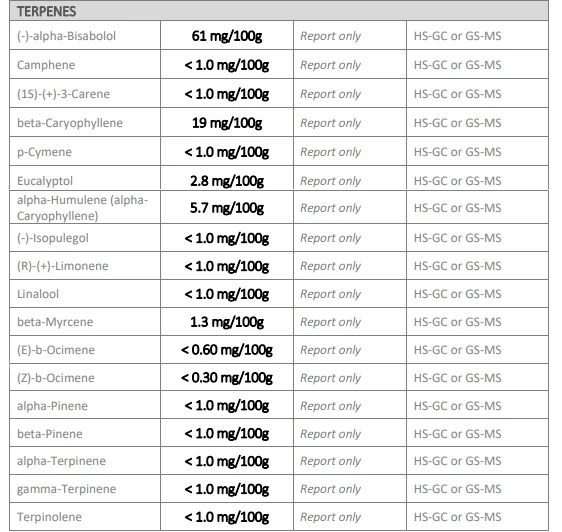
Like the cannabinoid profile, your COA’s terpene profile section identifies the aromatic plant molecules present in your CBD product. Beyond general knowledge, this section may be handy if you are allergic to limonene or other terpenes. Each compound’s concentration is typically recorded in milligrams per 100g, but lab technicians may choose different units to accommodate liquid products. This section should also reference the analytical methods that experts used throughout the testing process.
You can read test results for common contaminants such as yeast, mould, E. coli and Salmonella in the microbiological profile. It’s important to remember that microbes are diverse groups of bacteria, and many of them are harmless. For example, if trace amounts of bacteria from the extensive E. coli family are recorded in a COA, it doesn’t mean that the CBD product is ‘infected’ or unfit for consumption. Instead, it means that expert lab technicians have safely screened any possible microbes that may be present. Similarly, your COA should also take other mycotoxin profiles into account.
In this section, you may encounter some abbreviations such as:
- CFU (colony-forming unit)
- PPB (parts per billion)
The Chemical Profile
The chemical profile assesses the extent to which residual solvents, pesticides, heavy metals, and allergens such as gluten may be present in your CBD product. These substances are often quantified in ppm (or parts per million) but can also be expressed in milligrams per litre (mg/L).
The Organoleptic Profile
Interestingly, COAs also include an organoleptic or ‘sensory’ section, which assesses the CBD product’s physical properties – the factors that influence user experiences on a practical level. This section of the certificate often analyses how the product looks, but it can also examine its smell, taste, and texture (where appropriate). If the lab technicians judge that the CBD product meets relevant industry and consumer requirements, they often communicate this simply by saying it ‘conforms’.
Physical Dosage
Towards the end of the COA, you should see some metrics associated with dosage. These involve assessing some of the weights and timings that may contribute to CBD dosage. As you may already know, there is no one-size-fits-all approach when it comes to judging how much CBD you should take. However, it’s always best to follow the suggested instructions detailed on your chosen product’s packaging.
The Official Sign-Off
Typically, you should expect to see the signature of a Quality Control Technician on behalf of the third-party lab team. The signature indicates that the Certificate of Analysis has been proofread and reviewed by a designated authority figure. It underlines the document’s credibility and names a specific individual willing to vouch for everything the COA reports. You should also see a date to indicate precisely when this technician expressed their approval.
Some Reputable Third-Party Labs to Look Out For
While there are many CBD testing venues worldwide, not all of them can perform accredited tests. In most major countries, ISO / IEC 17025 is the standard by which most laboratories must be accredited to be considered technically competent. The most reputable COAs come from prestigious laboratories with certified THC tests, and the least reputable reports come from unaccredited science facilities. For your reference, here are some iconic analytical testing facilities based in the UK and beyond:
British Cannabis, London, UK
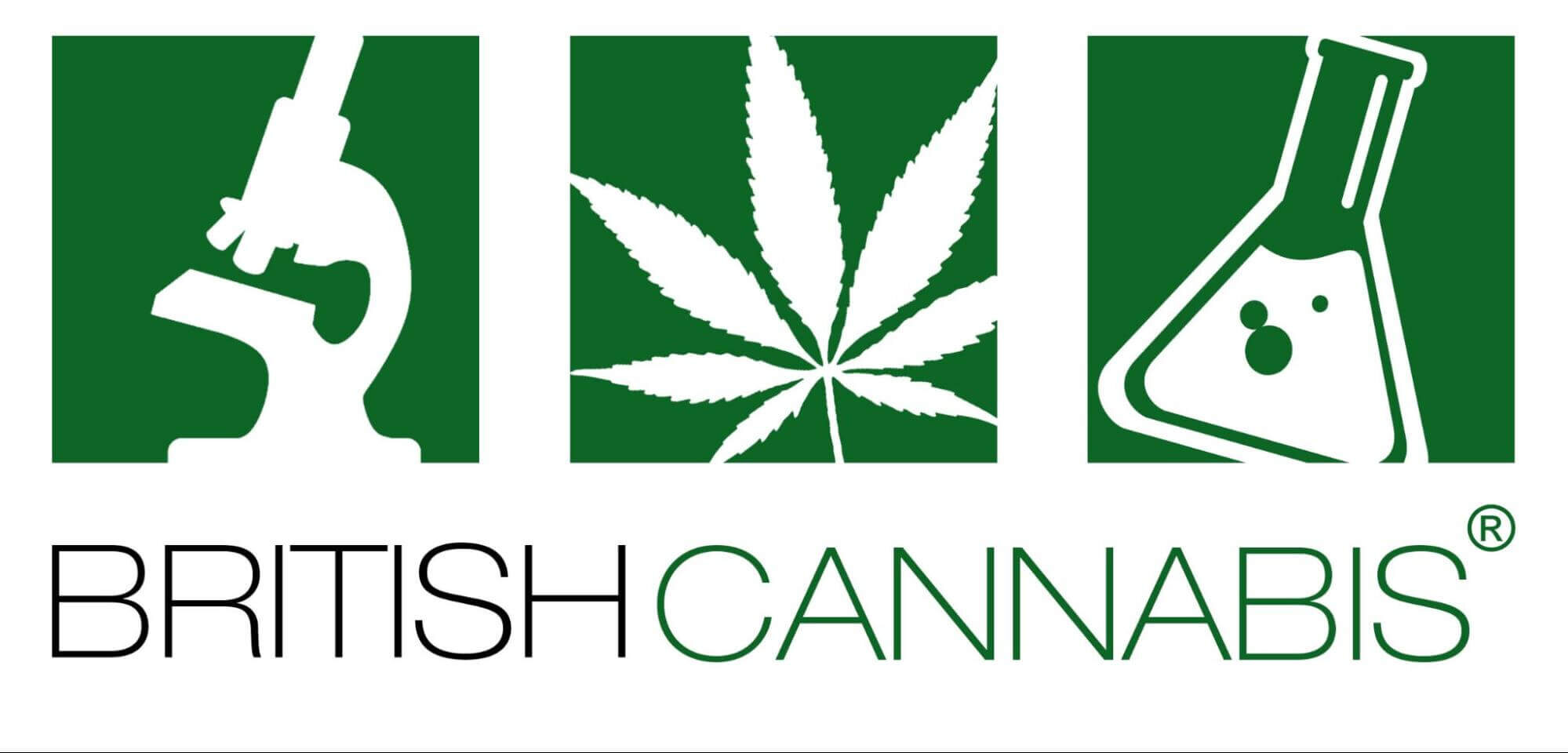
British Cannabis is a hemp heavyweight – the most prominent industrial producer, manufacturer, and distributor of cannabis Sativa L in the UK. Registered with the Medicines and Healthcare Products Regulatory Authority (MHPR), British Cannabis maintains high standards for CBD-themed products. At their official testing facilities, lab technicians can purify and control active ingredients, test THC levels, and alter their products’ chemistry at a molecular level.
BSCG, Los Angeles, California
BSCG (or Banned Substances Control Group) is a testing facility with a strong track record in food supplements and sports drug testing services. It offers comprehensive assessments of CBD and hemp-derived products covering all areas of chemistry and composition. BSCG also performs detailed supplier verification audits to ensure the highest possible quality and safety standards are maintained throughout the supply chain stages.
Desert Valley Testing, Phoenix, Arizona
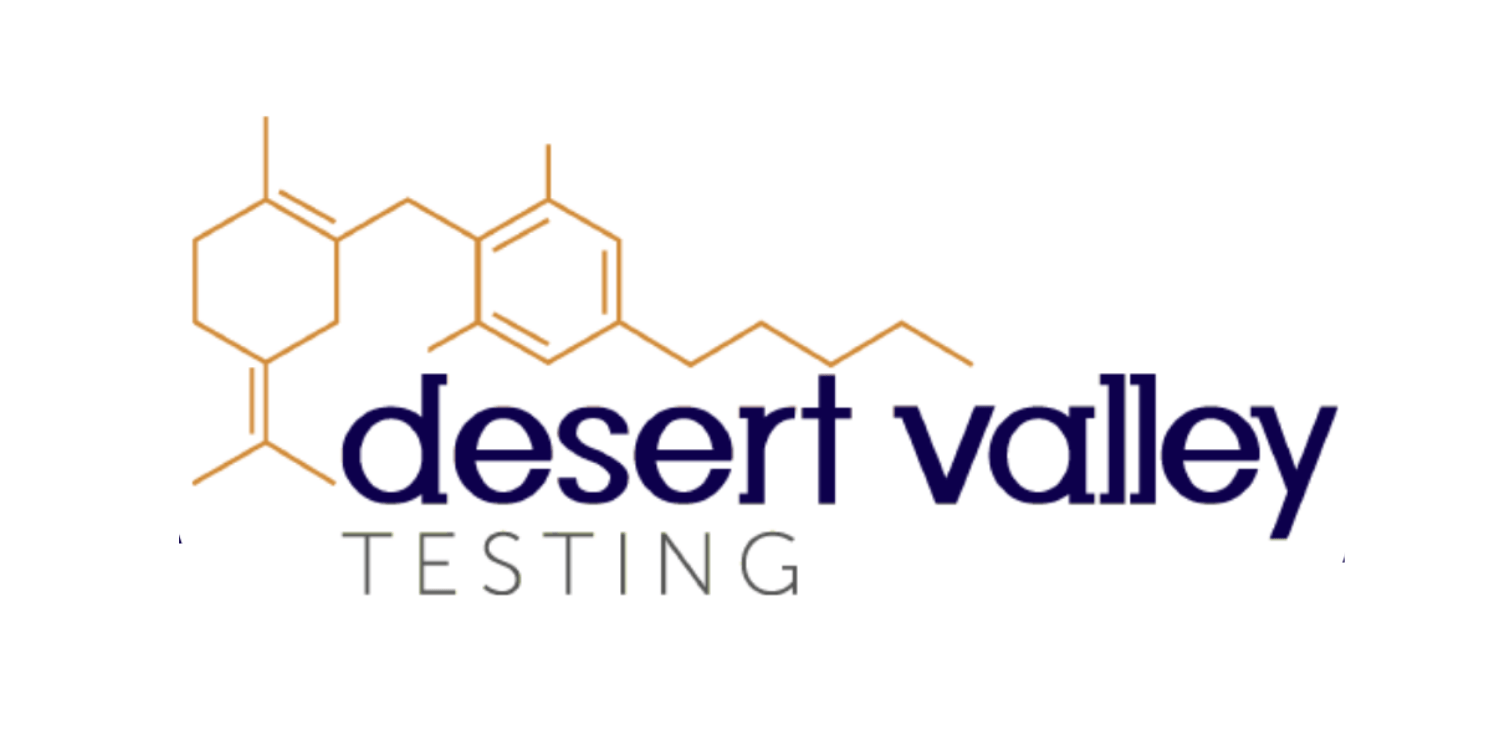
Desert Valley Testing uses state-of-the-art facilities and is fully equipped to perform chromatography, spectrometry, and more. In terms of CBD, this lab analyses cannabinoids and terpenes, alongside testing for contaminants such as residual solvents, pesticides and mycotoxins.
Eurofins Scientific, London, UK
Eurofins offers multi-accredited lab testing services – specialising in analytical chemistry, microbiology and bio diagnostics. Alongside the standard compound identification and contaminant profiling, Eurofins tests CBD using infrared and ultraviolet spectroscopy. Thus, it is considered a cutting-edge testing facility.
Fundación CANNA, Muelle de Barcelona, Spain
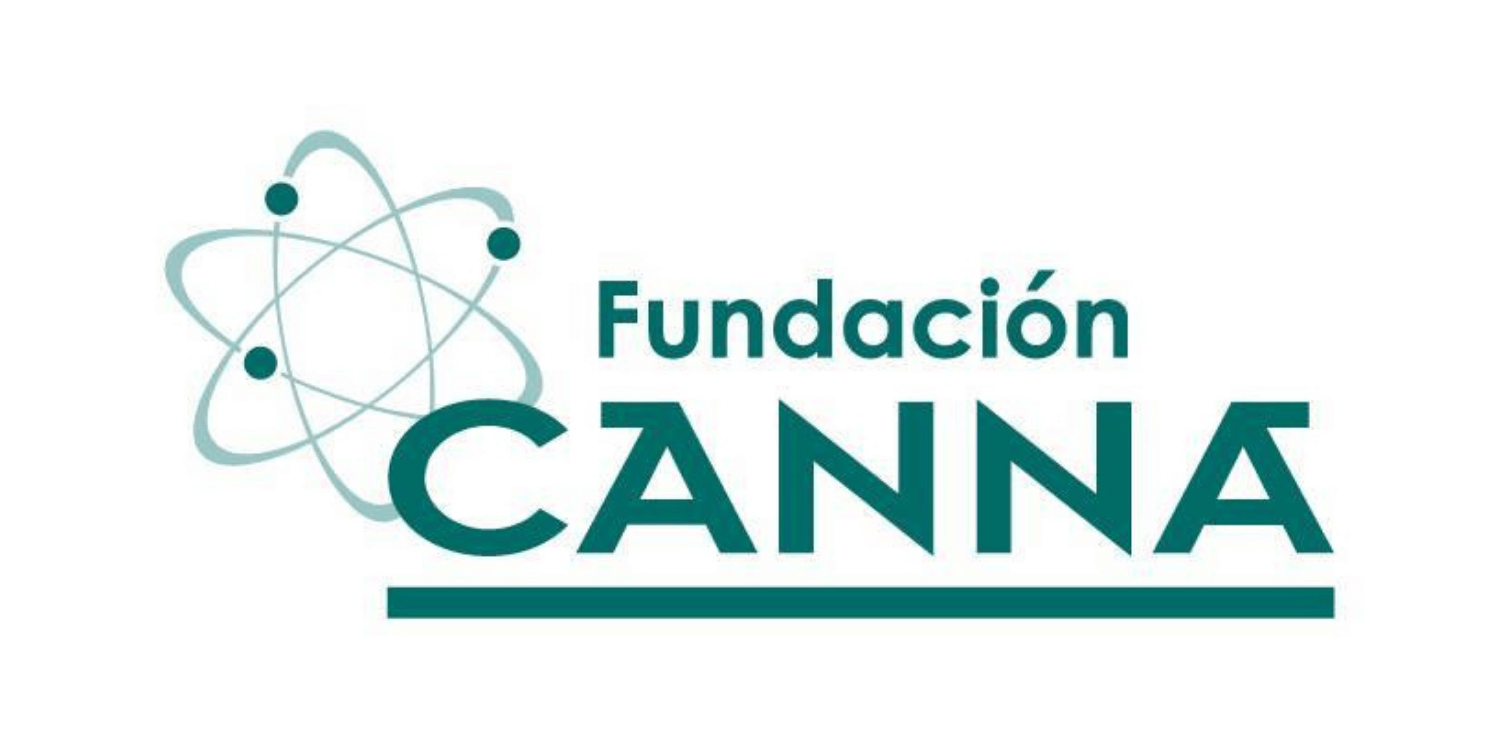
As its name suggests, Fundación CANNA is devoted to researching cannabis and its consumption. The facility offers cannabinoid and terpene profiling, along with heavy metal tests and microbe examinations.
Infinite Chemical Analysis Labs, San Diego, California
Founded in 2016, Infinite Chemical is already building a legacy as a facility with impressive accreditations. Regarding hemp research, it performs all standard potency, identity, and contamination tests. Additionally, Infinite Chemical analyses factors such as water activity, vitamin E and hemp gender identification.
JHG Analytical Services, Waterford, Ireland

JHG Analytical Services have a favourable reputation in agricultural, environmental, and petrochemical research, making it a strong candidate for testing hemp products such as CBD. Beyond assessing terpene and cannabinoid content, JHG also analyses antioxidants, flavonoids and polyphenols.
Kaycha Labs, Denver, Colorado
Kaycha Labs (formerly Phytatech) exclusively offers the full range of CBD testing facilities to registered cannabis professionals in Colorado. However, it also provides standard cannabinoid profiling, potency tests, and contamination tests on a more general level.
Leaf Laboratoire, Boissy-Saint-Léger, France
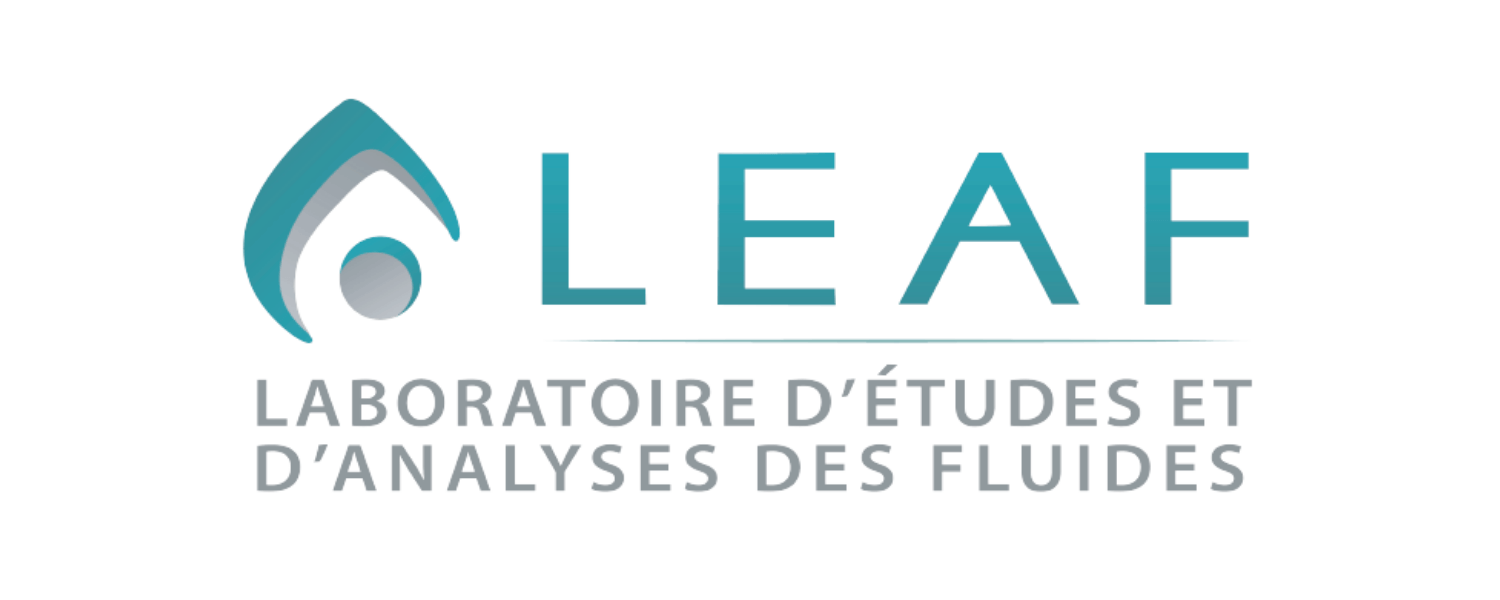
Leaf Laboratoire focuses on fluid analysis – specifically e-liquids such as CBD vape oil. It is certified by a national standardisation authority called NFNOR and conducts thorough cannabinoid and contaminant tests.
Pharma Hemp Laboratories, Ljubljana, Slovakia
Pharma Hemp is an internationally recognised testing facility that is most known for analysing hemp-derived cannabinoid products. It conducts cannabinoid profiles using techniques such as HPLC, and also functions as an industrial CBD distributor.
Phytovista Lab, Beckington, UK

At Phytovista, CBD samples are tested using comprehensive techniques to determine cannabinoids, terpenes, potency, and contaminants. This laboratory also provides detailed reports to help CBD retailers label their supplements and cosmetics more transparently.
Nowadays, CBD has an incredible demand as a hemp-derived compound which may offer some possible wellness benefits. As studies continue to explore its prospects, preliminary evidence suggests that CBD may potentially impact some common symptoms of anxiety, pain, muscle tension, and sleep disorders. While most researchers imply that CBD is a relatively low-risk substance to consume, this is based on the assumption that the hemp-themed product you are using is of adequate quality. As we’ve learned throughout this article, some products are incorrectly labelled, and ‘watchdog’ researchers have discovered some potentially dangerous contaminants such as heavy metals and illegal THC concentrations.
During third-party lab tests, outsourced scientists retrieve CBD samples and use diverse methods to identify and quantify compounds. They also search for contaminants such as microbes, heavy metals, pesticides, and residual solvents. Typically, the findings are summarised in a Certificate of Analysis (COA) – an official lab report that confirms the exact chemistry of a CBD product. If you’re looking for premium CBD representing Good Manufacturing Practices, a COA is a non-negotiable document. You deserve to know what you’re paying for and whether it meets high standards.
Here at Alphagreen, we understand this – which is why we only feature lab-tested brands that have ‘passed’ with flying colours.

Anastasiia Myronenko
Anastasiia Myronenko is a Medical Physicist actively practicing in one of the leading cancer centers in Kyiv, Ukraine. She received her master’s degree in Medical Physics at Karazin Kharkiv National University and completed Biological Physics internship at GSI Helmholtz Centre for Heavy Ion Research, Germany. Anastasiia Myronenko specializes in radiation therapy and is a fellow of Ukrainian Association of Medical Physicists.